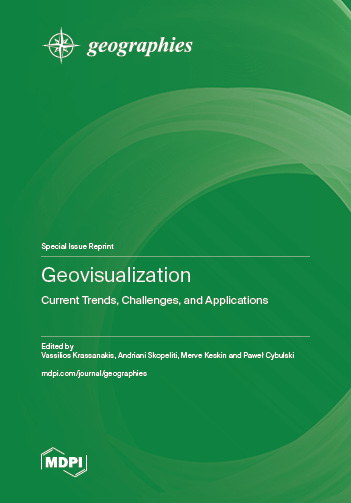- 1.7Impact Factor
- 2.9CiteScore
- 18 daysTime to First Decision
Geographies
Geographies is an international, peer-reviewed, open access journal on geography published quarterly online by MDPI.
Quartile Ranking JCR - Q2 (Geography)
All Articles
News & Conferences
Issues
Open for Submission
Editor's Choice
Reprints of Collections

Reprint
Geovisualization
Current Trends, Challenges, and ApplicationsEditors: Vassilios Krassanakis, Andriani Skopeliti, Merve Keskin, Paweł Cybulski

